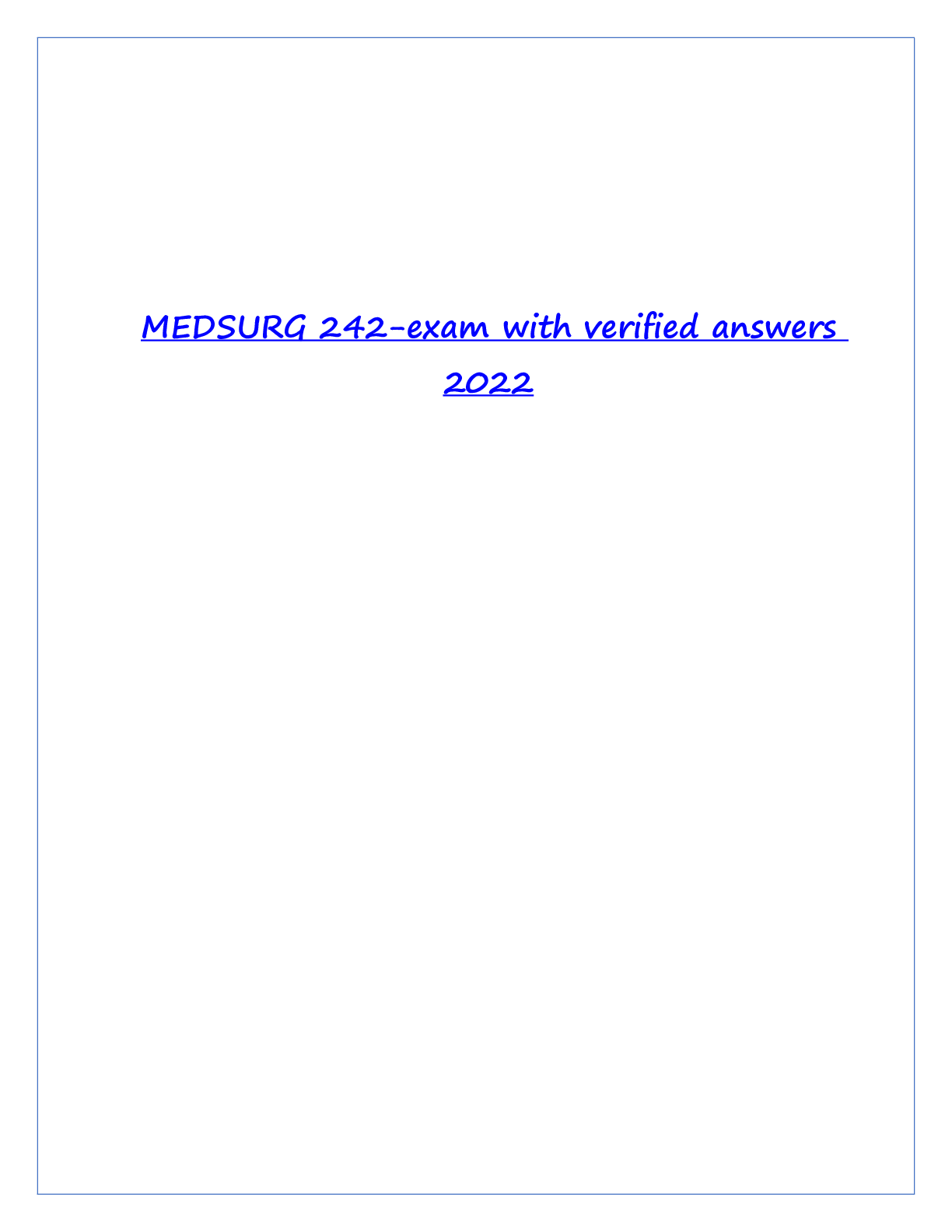Health Care > STUDY GUIDE > ATI TEAS 6 STUDY GUIDE READING, MATH SCIENCE AND ENGLISH SECTIONS LATEST UPDATE 2021 GRADED A (All)
ATI TEAS 6 STUDY GUIDE READING, MATH SCIENCE AND ENGLISH SECTIONS LATEST UPDATE 2021 GRADED A
Document Content and Description Below
King Henry VII- Expository ● The word infamous in the passage means – Notorious Social Media- Persuasive ● It’s talking how now of days there’s a lot of news on the internet, which some... are true and some are fakes. People just share them depends on how they feel about it. ● It’s trying to get people to fact checking before just posting random information. (By Tamika Y.) UFO- Narrative ● It’s talking about aliens, and an old man that got lost. (READ THE PASSAGE, Is on The GROUP :) Greek Theater- Expository The robbery passage (Dog and Humans are Best friend)- Persuasive ● When it asks how would you rename this passage answer is (Jewel Thief on the Lose) Frida Kahlo- Expository/ Informative ● They will ask you to put her life in chronological order and the answer to that question is: First, she got hit by a train; Next, she started drawing pictures of herself; Then, she married Diego. (Credit to Tamika Young for this) Casino Passage- Persuasive ● It’s trying to explain how is better to go to a Casino then buying a lottery ticket. Buying a lottery ticket, you have a lowest change of winning than going to a Casino and playing. The Chili Recipe- Expository ● Read carefully the Recipe and the questions. ● One of the answers is to rinse the beans first. Central Park Passage- Expository / Informative ● All I remember is that it’s a famous park in New York. ● The passage will ask you to put the sentences in chronological order. (By Tamika Y.) Time Management- Chimney Passage- Type of Passages: ● Expository: Something you find in an academic journal, a recipe, etc. (Very technical) (Teach, Inform, or explain.) ● Technical: Is like following steps to complete something. ● Narrative: Telling a story and entertain ● Persuasive: Making you believe something or to do something. ● Descriptive: Give physical details or provide unique characteristics Most know this: ● Author Purpose: His reason to write a specific topic. ● Theme: The subject to talk, a piece of writing, a person thoughts. ● Topic: that part of a sentence about which something is said. (a conversation) ● Main Idea: Is usually in the first sentence, overall idea of the paragraph. ● Fact: Something that it can be prove is true. ● Opinion: A view or judgment. ● Bia: Against something or someone. ● Compare: two or more ● Inform: Give facts ● Entertain: Fiction ● Express: Feelings ● Stereotypes: A characteristics ascribed to groups of people involving gender, race, origin, etc. ● Cause and Effect: The author describes a situation and then its effects. ● Compare and Contrast: The author explores the similarities and differences between two or more things. ● Chronological: The author list events in the order in which they happened. ● Mood: Influences a reader emotional state in the piece. ● Tone: Describes the author’s attitude toward the topic. To Respond to Questions, you Should know this: ● Almanac: A book that gives you important dates such tidal waves, astronomical events, etc. ● Thesaurus: A dictionary that has definitions, synonyms and antonyms. ● Bibliography: A list of books, magazines, articles, etc. ● Biography: Story of someone written by someone else. ● Autobiography: Story of someone written by the same person. ● Atlas: A book of maps or charts. ● Appendix: A section or table at the end of the book. ● Index: Reference in alphabetical order to where everything is in the book. ● Glossary: Alphabetical list of terms of words with definition. The word Disseminate is in one the Passages and they ask you what does it means: Answer will be (Spread of disperse) ● Metaphor: A figure of speech containing an implied comparison, in which a word or phrase ordinarily and primarily used of one thing is applied to another. Example: Noah Has a heart of a lion ● Simile: A comparison of two different things using the words LIKE or AS. Example: On her first day of school, Jane was as cool as a cucumber. ● Forum: Online message board. ● Rhetorical: Used for effect not meaning. ● Memorandum: A written informal note usually used for business purposes. ● Sequential: Following SET of Orders. (First, Second, Third, Next, While, Last, Before, After) ● Anecdote: A short story that illustrates a concept but isn’t the main idea. Math Section: Percentages (Very Important, Must Know): Covert Decimal to Percent by: Multiplying by 100 Convert Percent to Decimal by: Divide by 100 Convert Decimal to a Fraction by: Milli means: one thousand of something 1Liter (L) = 1000mL 1 Yard (Yd.) = 3 Feet (Ft) 12 Foot = 4Yd 1inch = 12 Ft Less than < Less or Equal than ≤ Greater than > Greater or Equal than ≥ Irrational Number: A number that can NOT Be expressed as terminating or repeating decimals. Rational Numbers: A number that can be expresses as a fraction. ● Example: 1/2 Contextual: Related to surrounding content. Erroneous: Incorrect Extraneous: Irrelevant Solution: The answer Terminate: To end Percent means: Per 100 Area of a circle: A=π × r^2 Area formula of a Square: A= L × L^2 Area of a rectangle: A= L × W Area of a triangle: A= ½ × b × h ALWAYS REMEMBER: King Henry Die By Drinking Chocolate Milk Example of a question that could be on the Test: ● Then multiply 0.096 times 100 to get the percent which = 9.6% What number is 20% of 8? ● You must multiply 20% × 8 = 160 ● 160 divided by 100= 1.6 24 is what % of 250? ● 24 divided by 250 = 0.096 5/8 of my class passed. What percentage of students in my class failed? ● 5 divided by 8 = 62.5 ● 100 – 62.5= 37.5 didn’t passed, but you must convert this into a fraction ● The answer will be 3/8 Failed. When Solving an equation always use PENDAS: Practice Adding and Subtracting Fractions: Practice Multiplication and Division Fractions: Practice Absolute Value Problems: Percent Decrease: PD= Original amount – New Amount/ Original Amount × 100 Percent Increase: PI= New Amount – Original Amount/ New Amount × 100 Proportions: Problem that could be on the test: ● A store sells two kinds of candles, scented and unscented. The scented burn 1/12 inches in 20 mins. The unscented burns 1/16 inches in 30 mins. Which type of candle burns in 1 Hour and what is its burn rate? 60 Minutes = 1 Hour Scented Candle - 20 Minutes in an hour goes 3 Times (20+20+20=60) - 1/12 *3 = 3/12 – You got to simplify so it will be ¼ Unscented Candle - 30 Minutes in an hour goes 2 times (30+30=60) - 1/16 *2 = 2/16 – You got to simplify so it will be 1/8 The answer will be the scented candle burn in 1 hour and its burn rate is ¼ ● A worker is paid 2,350 monthly and has $468 withheld from each monthly paycheck. Which of the following is her annual salary? A. 27,732 B. 22,584 C. 28,200 D. 33,816 is Paid $2350 monthly - $468 withheld each monthly paycheck = $1882 * 12 month = $22584 Annual Salar You must know this because they will ask you to round decimals up. Example: There’s a question in the teas that in order for you to get it right you need to know the sides of the triangle: Must know how to identify this chart: Must arrange the number from least to greatest or greatest to least. Must know MEAN, MEDIAN, MODE and RANGE! SCIENCE SECTION: Cell Parts and their Functions Mitochondria- generate ATP Golgi Apparatus- package proteins Lysosomes- digest protein, carbs, and lipids. And gets rid of worn out particles Ribosomes- protein synthesis Nucleus- where DNA is located and tells cells their functions Peroxisomes- oxidation and detoxification What is found in Prokaryotes and Eukaryotes cells? - Cell Membrane/Plasma membrane, DNA, Ribosomes How does water move through the cell membranes? - Proteins Respiratory System What transport is gas exchange? Passive transport How does gas exchange occur? –Diffusion Where does gas exchange occur? –Alveoli What is the cause of emphysema? -chemical pollutants, smoke What is responsible for speech? –larynx What control the breathing process? - Medulla oblongata Cardiovascular System What carries oxygenated blood? –An artery moving blood from the heart to a muscle What is function of lymph nodes? - filter debris from intracellular spaces What is the function of the spleen? - Filter blood and help fight infections What is the most abundant cells? - Red blood cells What is the pacemaker of the heart? - Sinoatrial node What is the function of the circulatory system? –Transport hormones ***Know the blood flow of the heart*** Gastrointestinal System What are the digestive enzymes? – Pepsin, Mucus, Hydrochloric What neutralizes stomach acid? - Bile/Sodium bicarbonate What are gastrulation cells? - Germ cells Where is bile stored? - Gallbladder What produces bile? -Liver What does villi do? - Increase surface area absorption [Show More]
Last updated: 1 year ago
Preview 1 out of 17 pages

Reviews( 0 )
Document information
Connected school, study & course
About the document
Uploaded On
Jun 10, 2021
Number of pages
17
Written in
Additional information
This document has been written for:
Uploaded
Jun 10, 2021
Downloads
0
Views
37


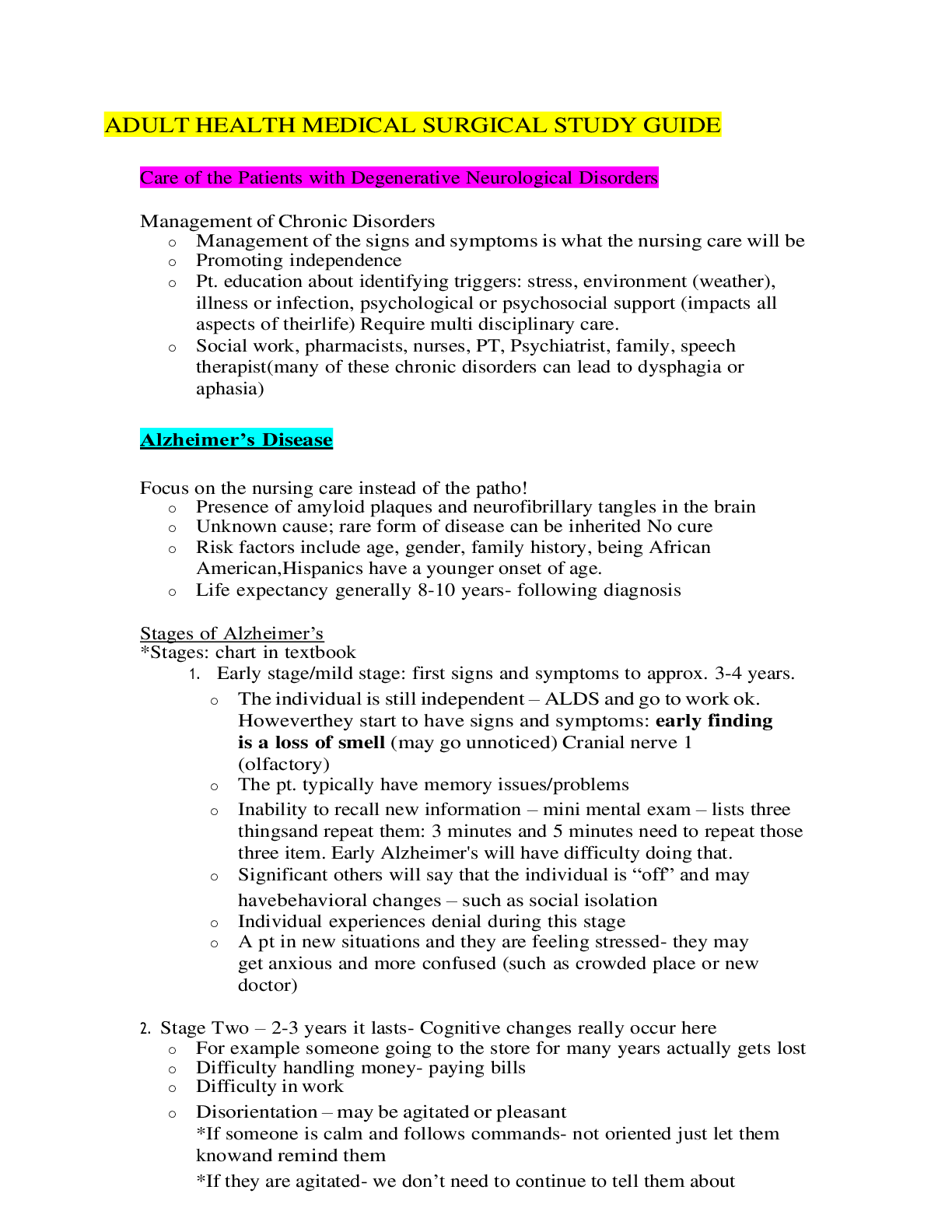
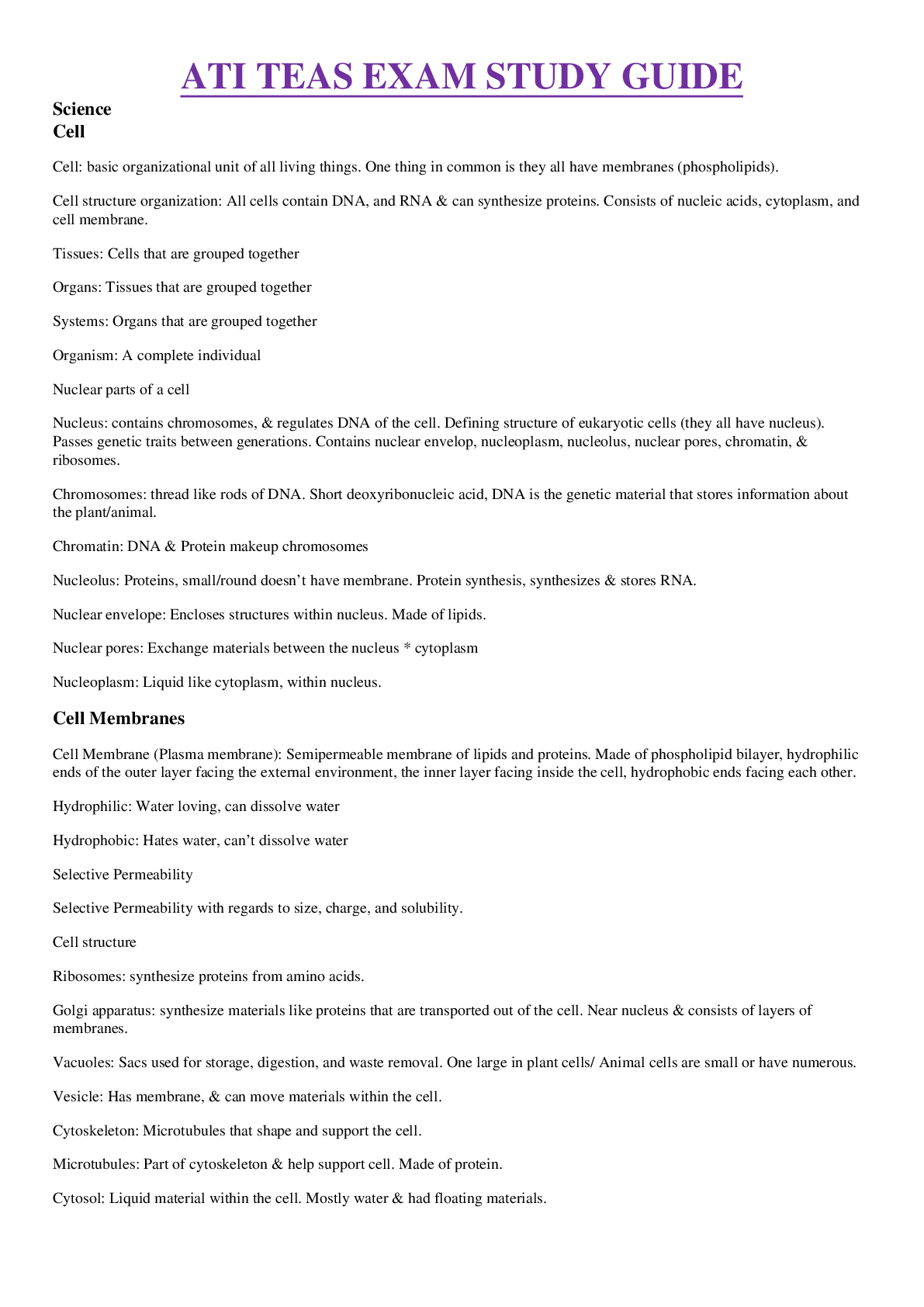

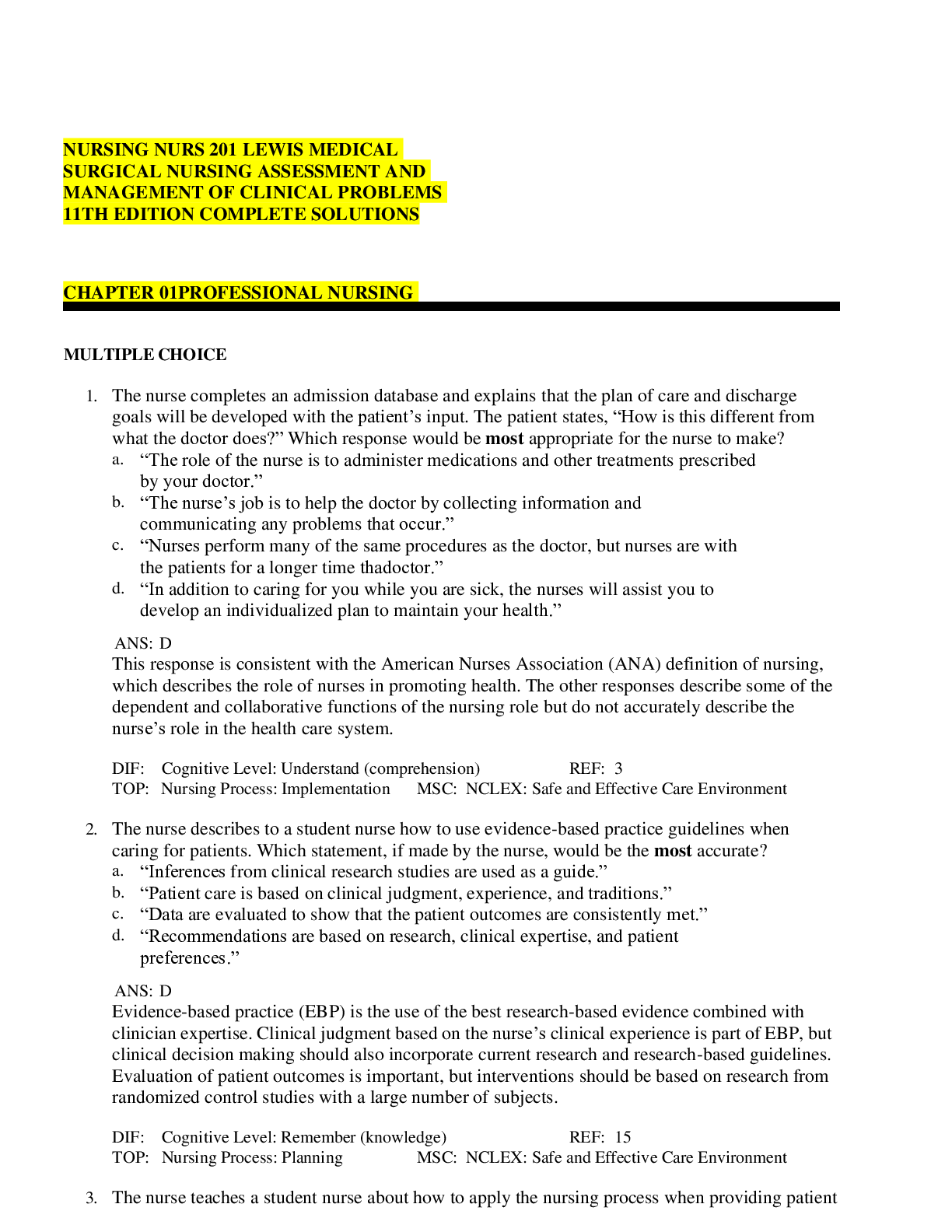

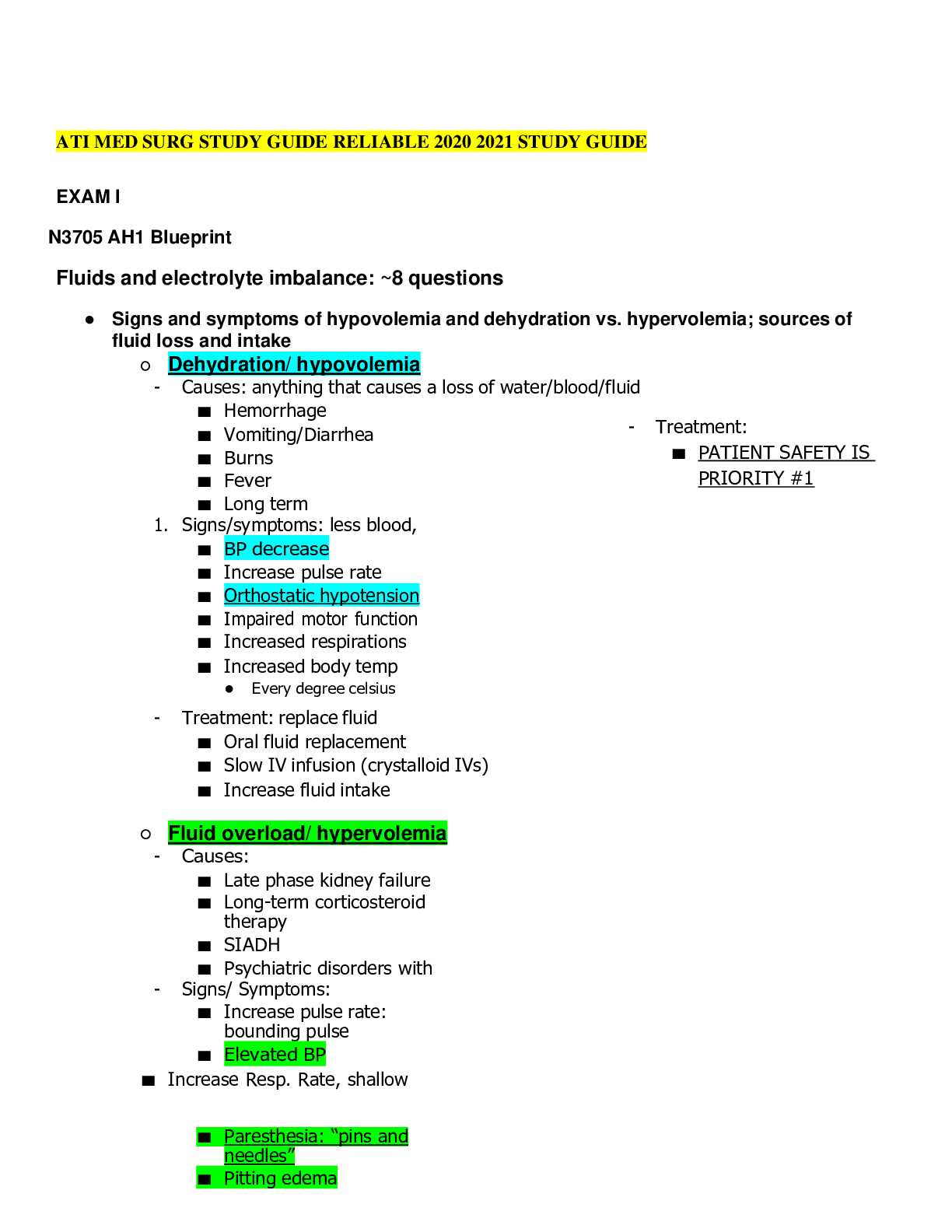
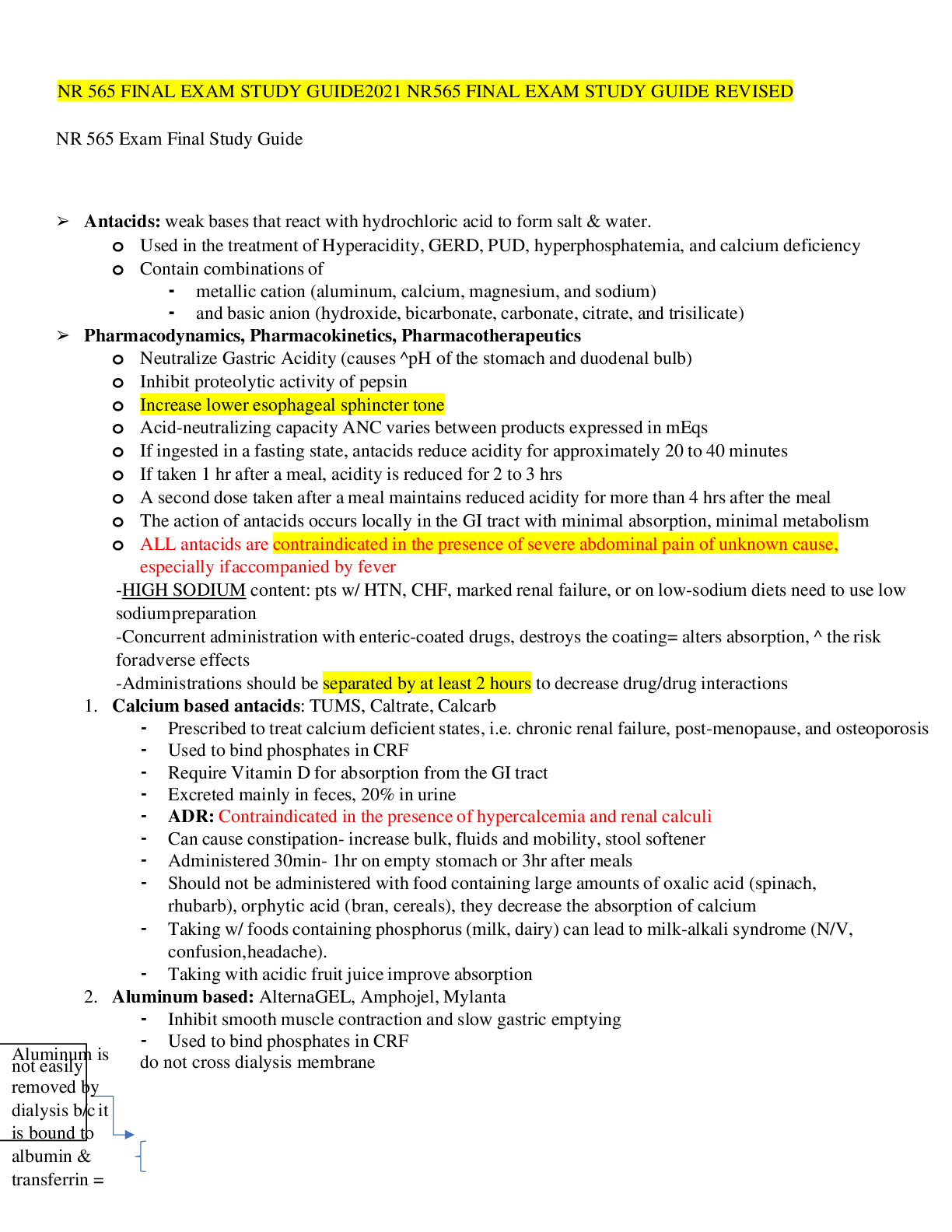




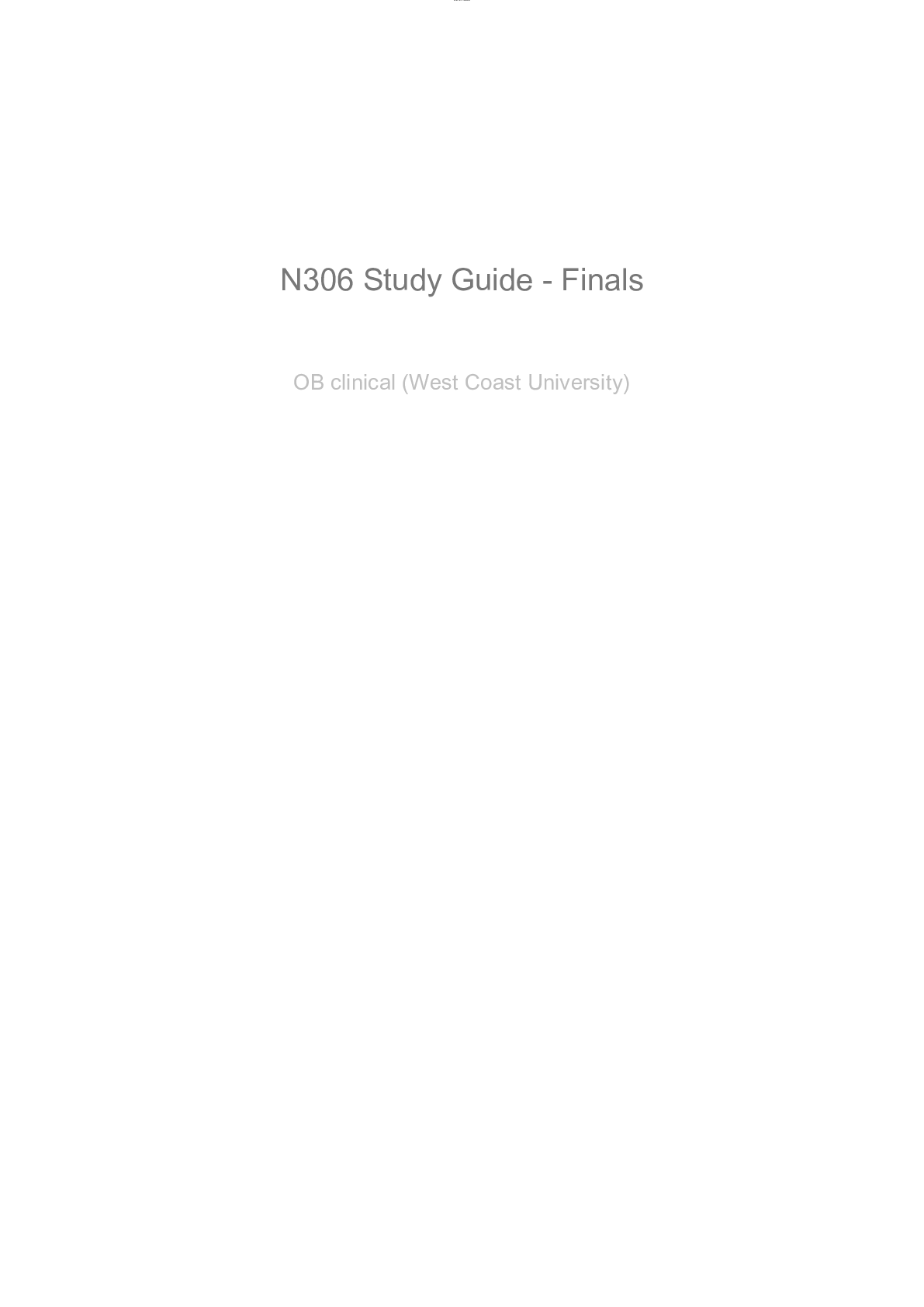
.png)

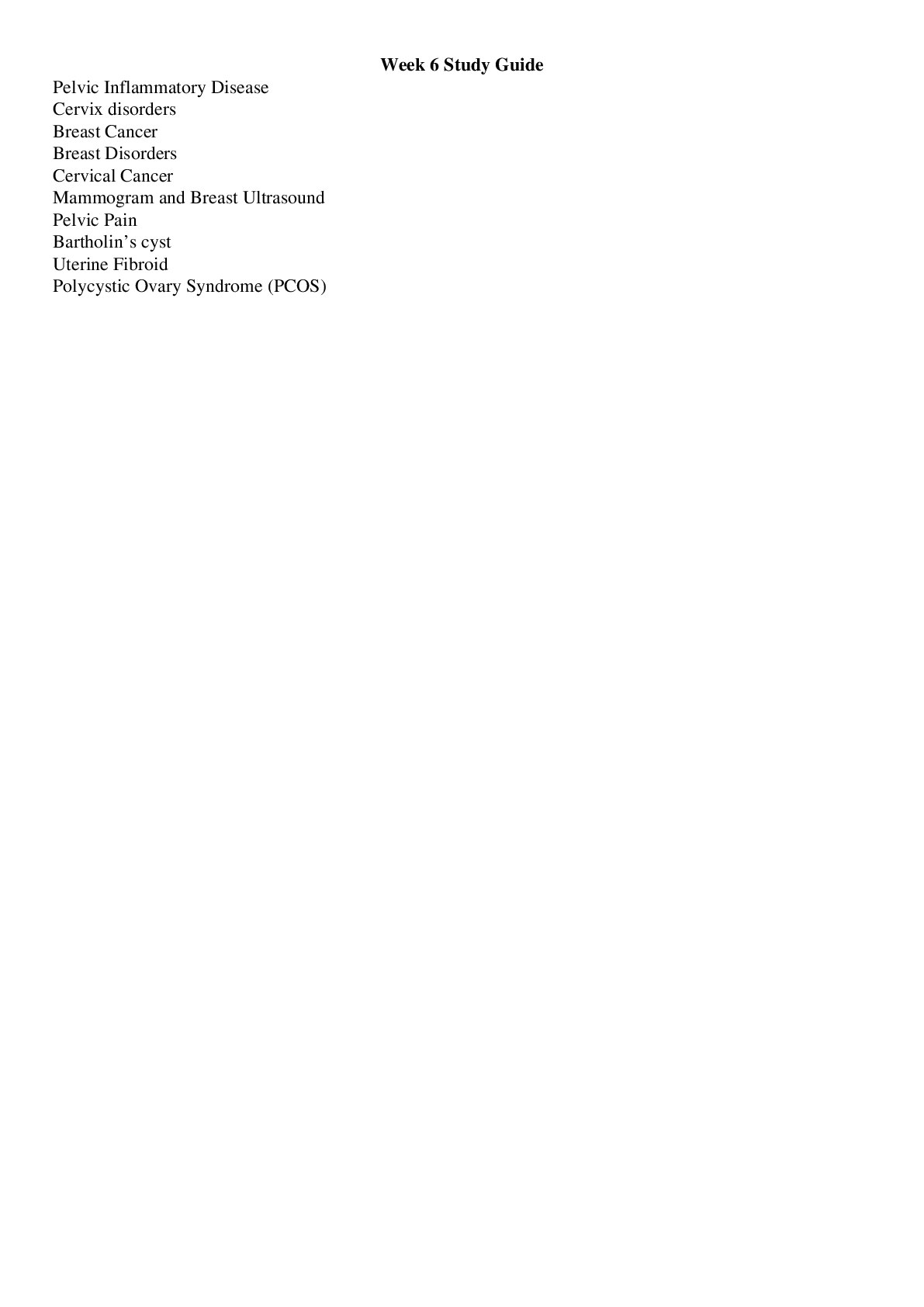


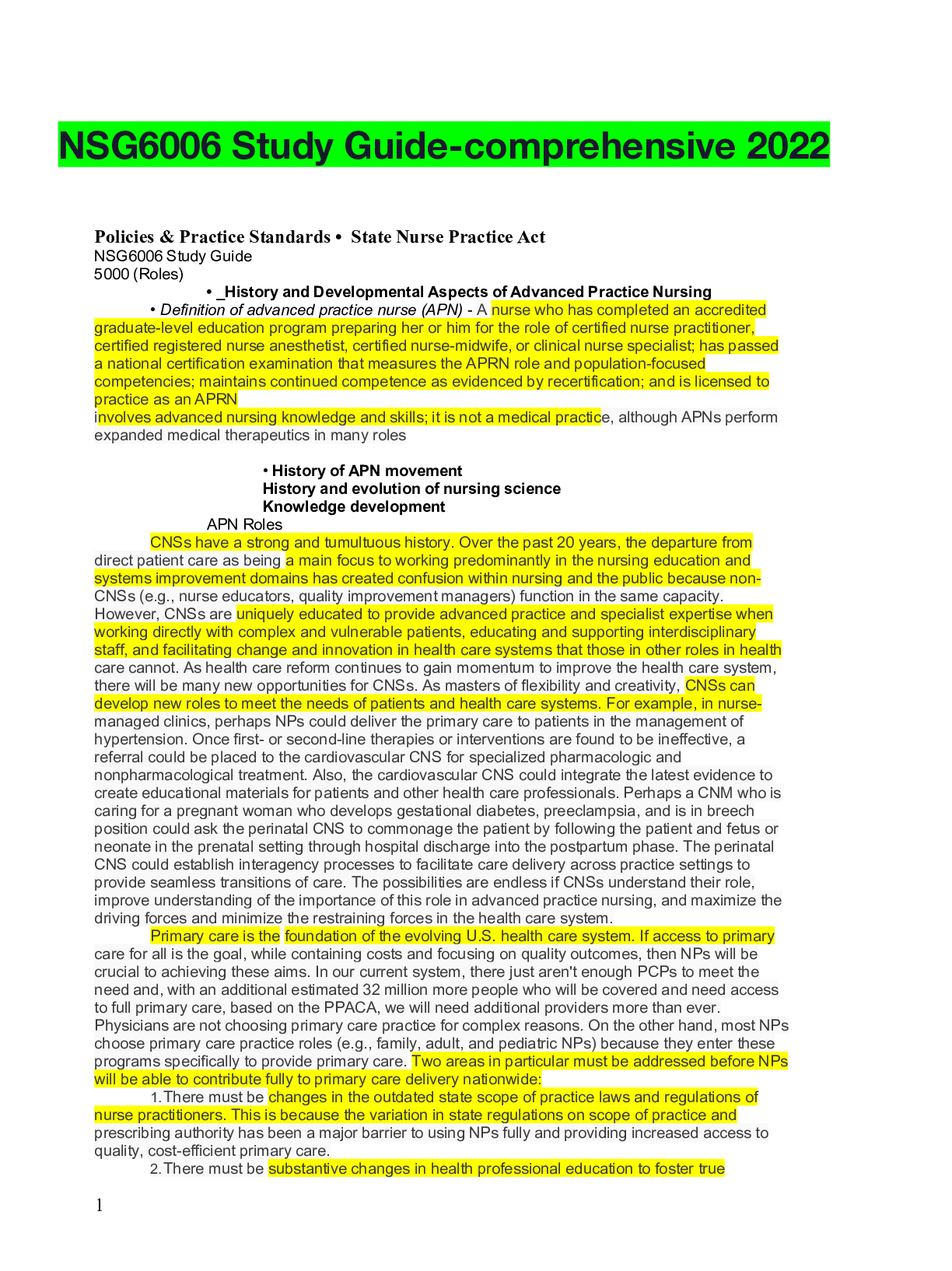
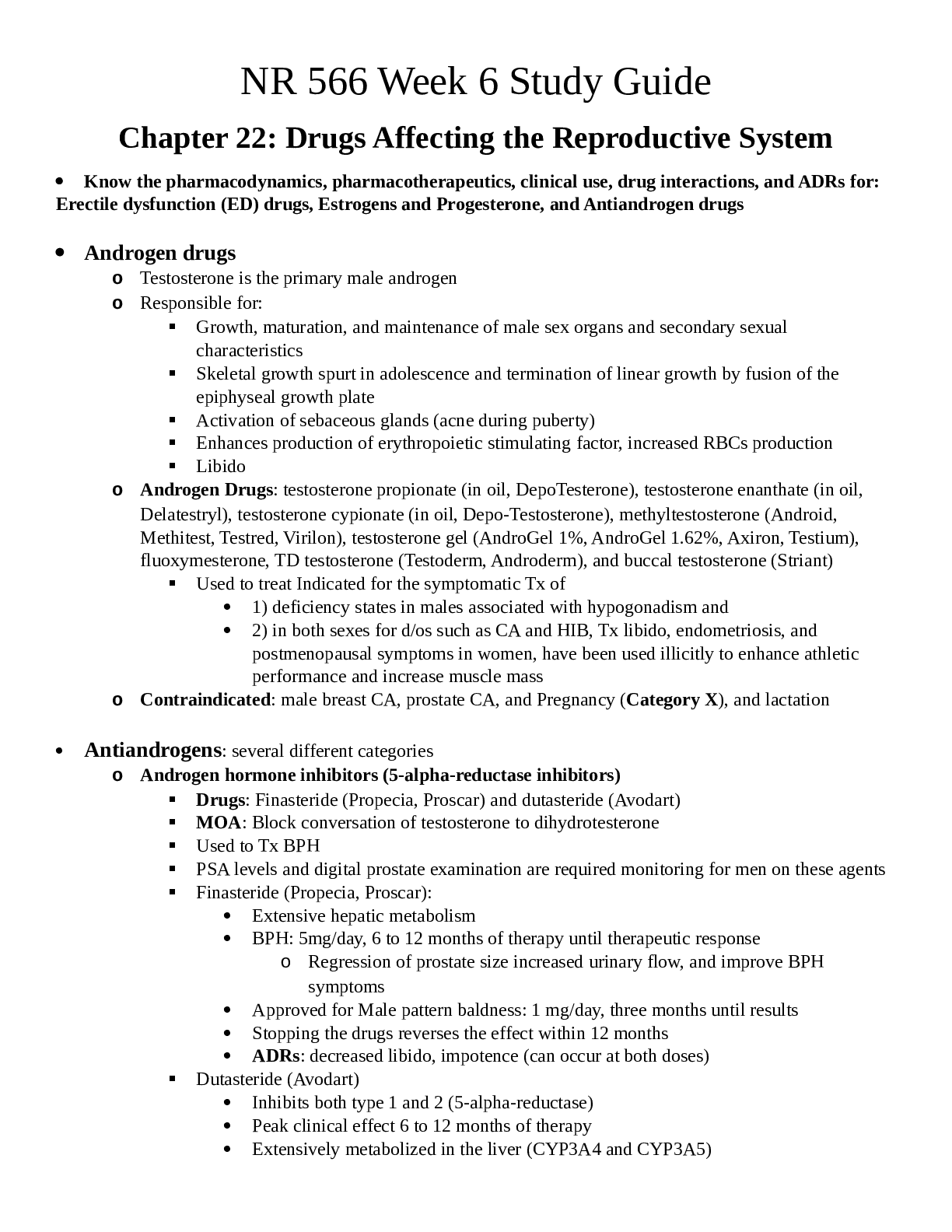

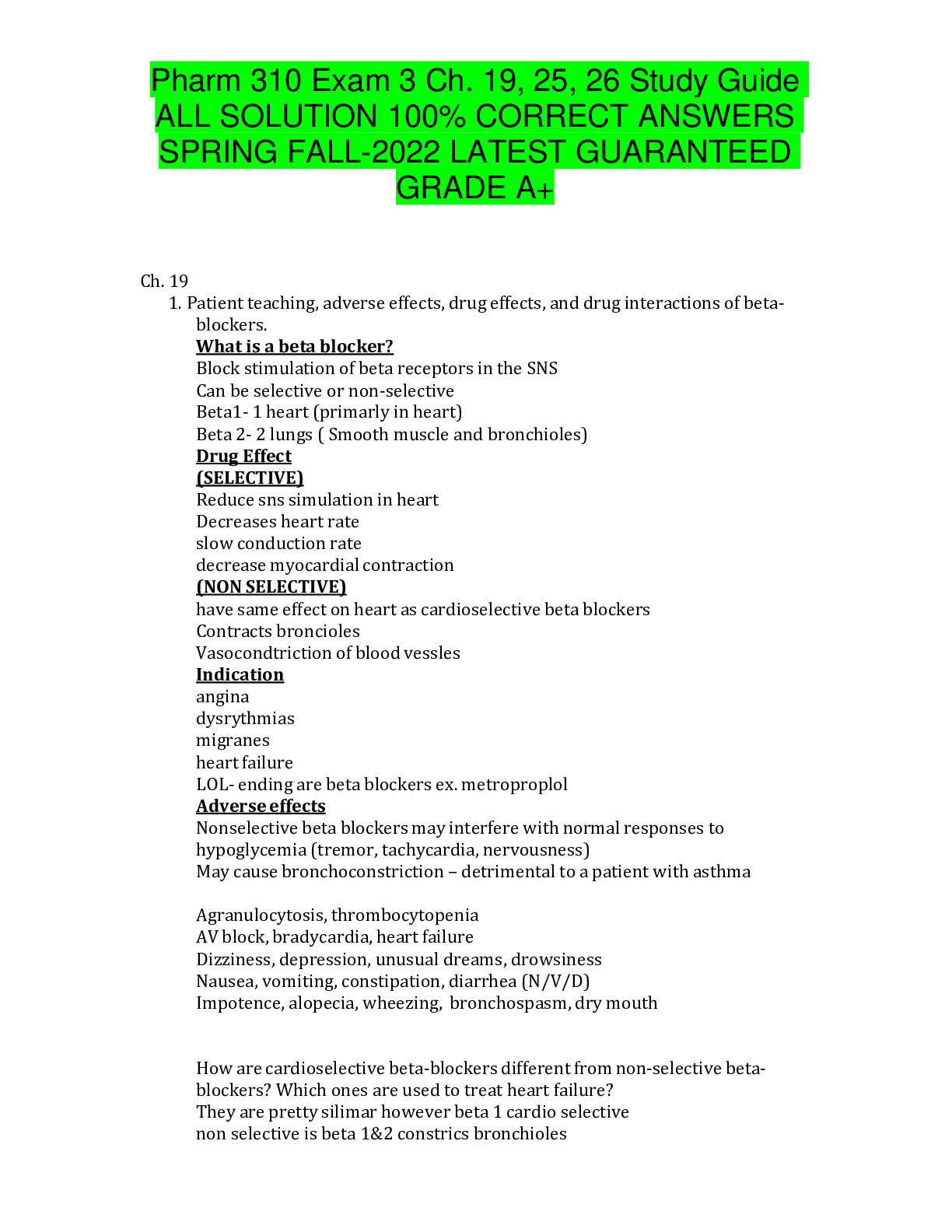


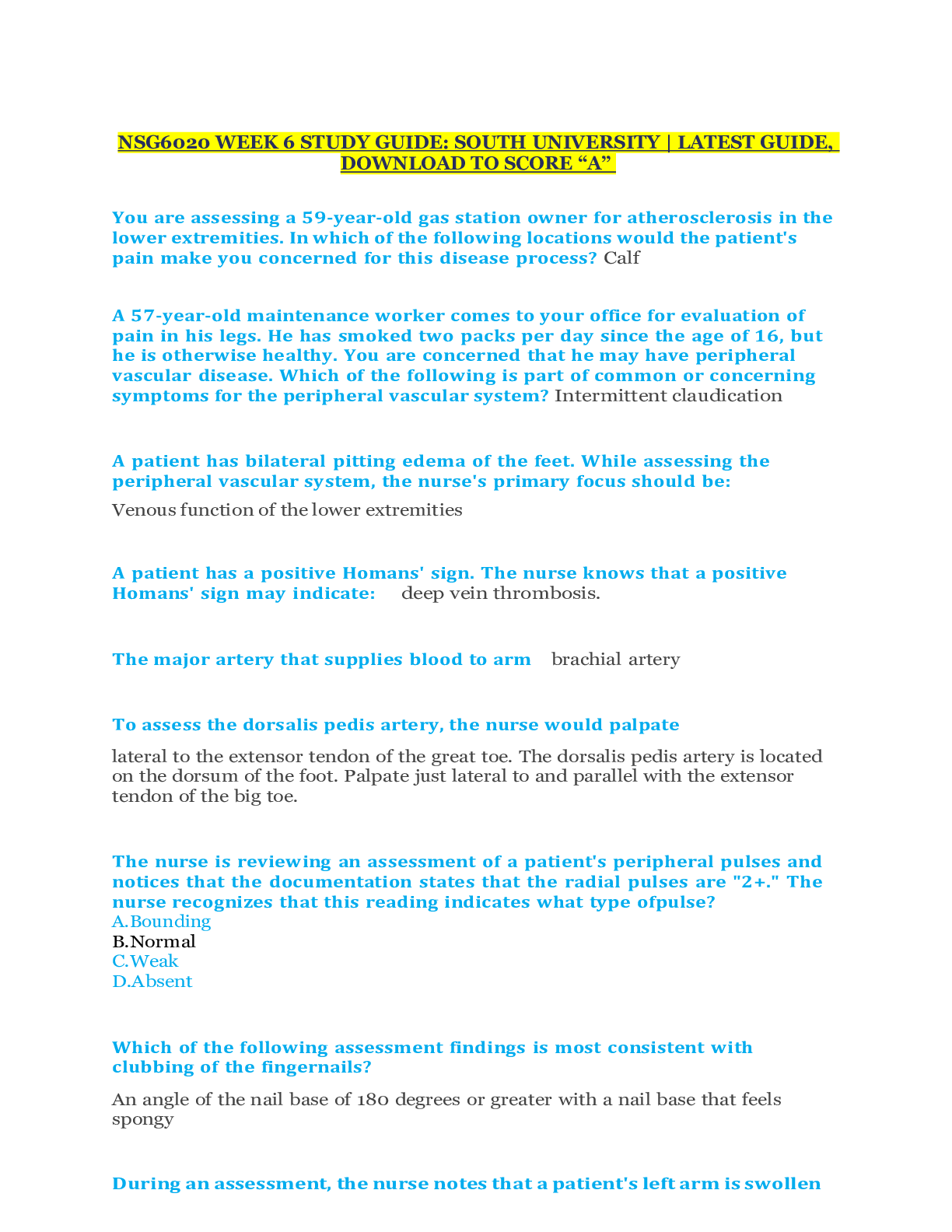
.png)
